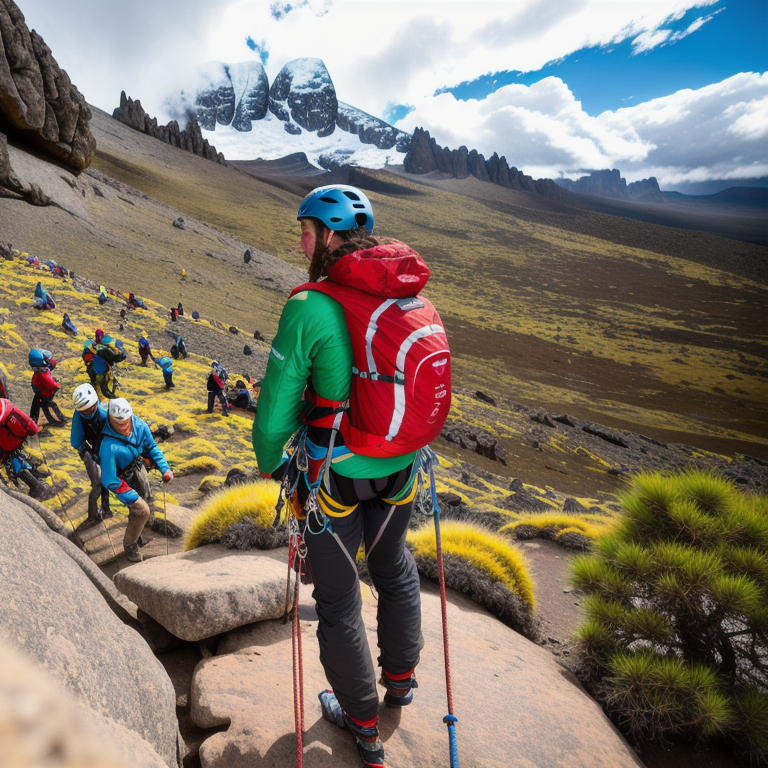Best Practices for adventure-tourism-climbing-mount-kenya: Best Practices for Adventure Tourism: Climbing Mount Kenya
Mount Kenya, an extinct volcano and the second highest peak in Africa, presents a unique climbing experience for adventure tourists from around the globe. Its scenic landscapes, diverse flora, and distinct climbing routes make it a must-visit for anyone looking to add an exhilarating chapter to their outdoor adventures. However, climbing a mountain of this magnitude requires careful planning and adherence to best practices. In this Blog post, we’ll explore the essential guidelines and tips for safely and enjoyably climbing Mount Kenya.
1. Understanding Mount Kenya
Before you embark on your journey, it’s crucial to understand what makes Mount Kenya unique. The mountain stands at 5,199 meters (17,057 feet) and offers several routes for climbing, with varying degrees of difficulty. The most popular routes are Naromoru, Sirimon, and Chogoria. Each route has its own unique attractions and challenges, from the vertical bog on the Naromoru route to the scenic lakes along Chogoria.
2. Best Time to Climb
The best times to climb Mount Kenya are during the dry seasons, from December to March and from June to October. During these periods, the weather is more stable, visibility is better, and the trails are less slippery, making it safer and more enjoyable to climb.
3. Physical Preparation
Climbing Mount Kenya is no small feat and requires a good level of physical fitness. Engage in comprehensive training that includes cardio, strength training, and hiking to build endurance and muscle strength. Training on hills or stair climbing can be particularly beneficial. It’s also advisable to experience higher altitudes to acclimate your body to the conditions you will face on Mount Kenya.
4. Acclimatization
Altitude sickness is a real concern when climbing high mountains. To minimize the risks, incorporate acclimatization days into your climbing itinerary. These are days spent at moderate altitudes to allow your body to adjust to the decreased oxygen levels. Gradual ascent is key to preventing altitude sickness.
5. Hiring a Guide
For a safe and informed climb, hiring an experienced guide is essential. Local guides not only know the routes but also are trained to handle altitude-related health issues and emergencies. Additionally, employing local guides supports the local economy and promotes sustainable tourism.
6. Gear and Equipment
Proper gear is critical to the success of your climb. Essential items include:
– Appropriate Footwear: Waterproof, insulated boots are necessary for the cold and wet conditions.
– Clothing: Layering is key. Include moisture-wicking base layers, insulating layers, and a waterproof outer layer.
– Climbing Gear: Depending on your route and the season, you may need ropes, harnesses, and crampons.
– Navigation Tools: GPS devices, maps, and compasses are vital, even if you have a guide.
[inspirational_quote]
– Camping Equipment: If your route requires overnight stays, high-quality tents, sleeping bags, and mats are necessary.
7. Environmental Considerations
Mount Kenya is a UNESCO World Heritage site, and preserving its pristine environment is crucial. Stick to the trails, carry all your trash out, and avoid harming the flora and fauna. Use biodegradable products and minimize the use of plastics.
8. Local Communities and Cultural Sensitivity
Engaging with local communities respectfully and considerately enriches your climbing experience. Learn about local customs and support local businesses by purchasing local products or Services.
9. Insurance
Ensure that you have appropriate travel and medical insurance that covers high-altitude climbing. Check that it includes helicopter rescue and repatriation in case of emergencies.
10. Real-World Examples
Many successful climbs on Mount Kenya have been achieved through adherence to these best practices. For instance, a group from Germany in 2019 successfully summited Point Lenana, one of Mount Kenya’s peaks, by training extensively for six months, hiring local guides, and following a slow ascent strategy that helped them acclimatize effectively.
Conclusion
Climbing Mount Kenya is an adventure that offers not only physical challenges but also the opportunity to engage with nature and local cultures in profound ways. By following these best practices, climbers can ensure they enjoy a safe, responsible, and fulfilling adventure. Whether you are a seasoned mountaineer or a curious novice, Mount Kenya has something to offer. Prepare adequately, respect the natural and cultural environments, and embrace the adventure that awaits at this majestic mountain. For more tips and guidance on adventure tourism, keep following the VisionKraft Consulting Blog. Safe climbing!
Thank you for taking the time to read our Blog! We hope you found the information valuable and insightful. If you have any questions, comments, or topics you’d like us to cover in future posts, please don’t hesitate to reach out. Stay tuned for more updates, and don’t forget to subscribe to our newsletter for the latest news and insights.
Warm regards.
